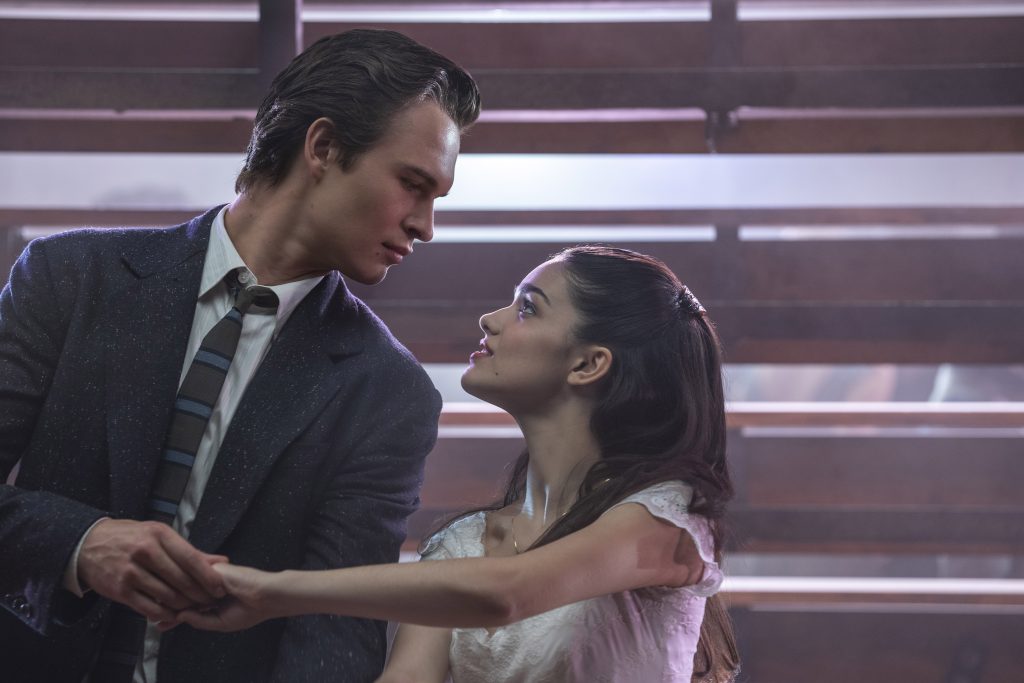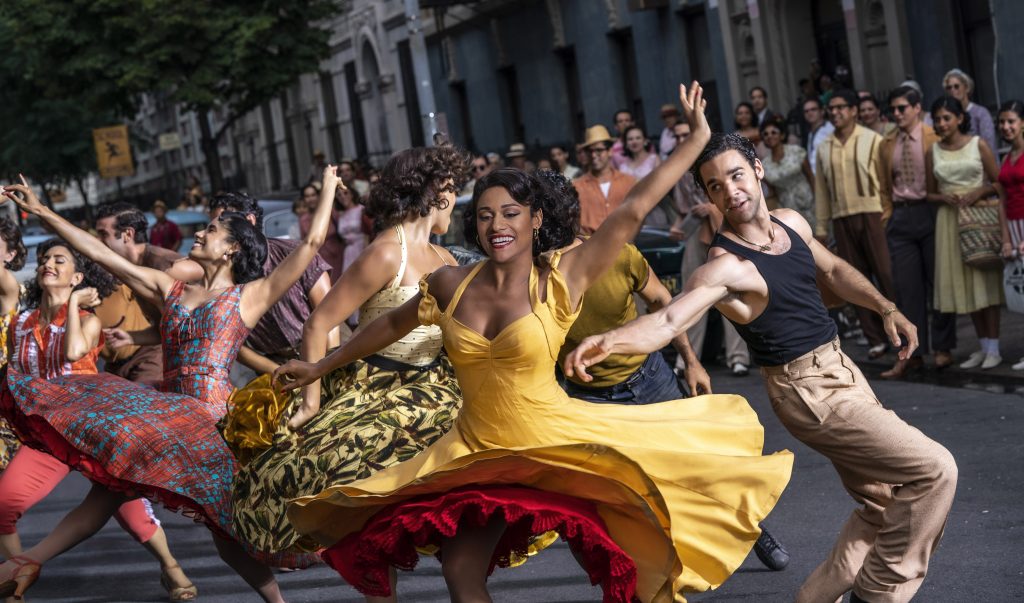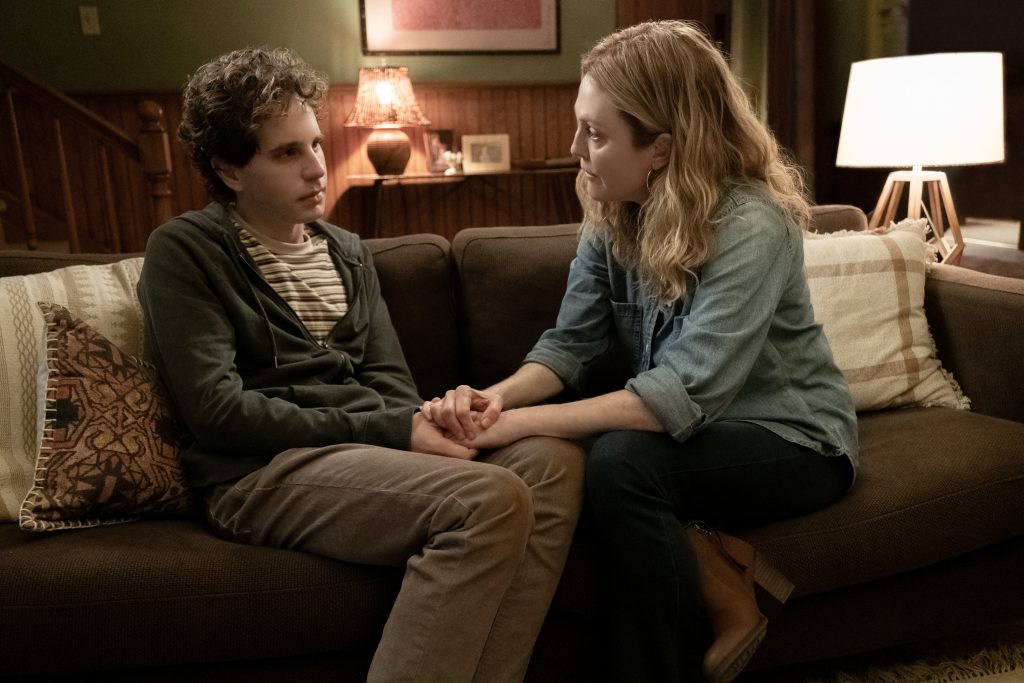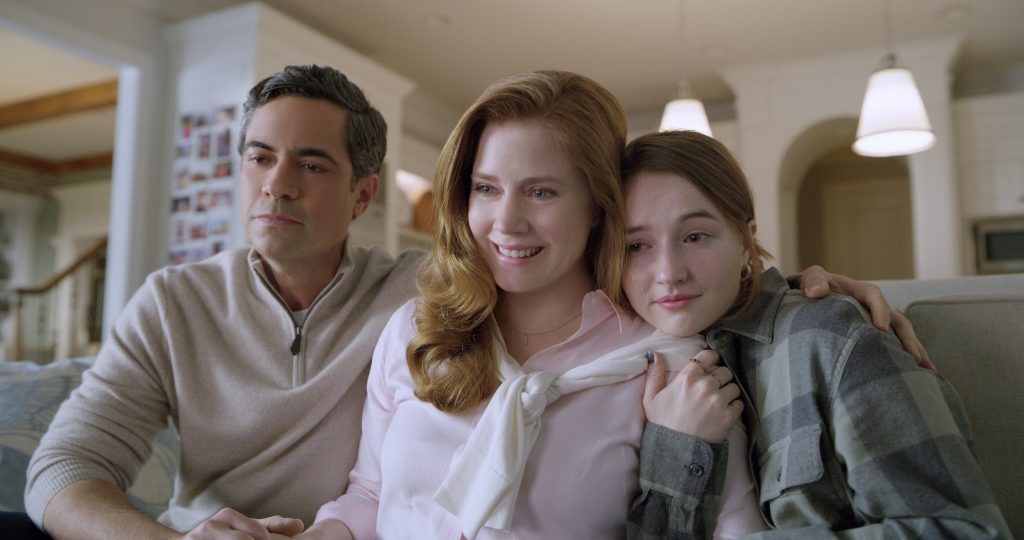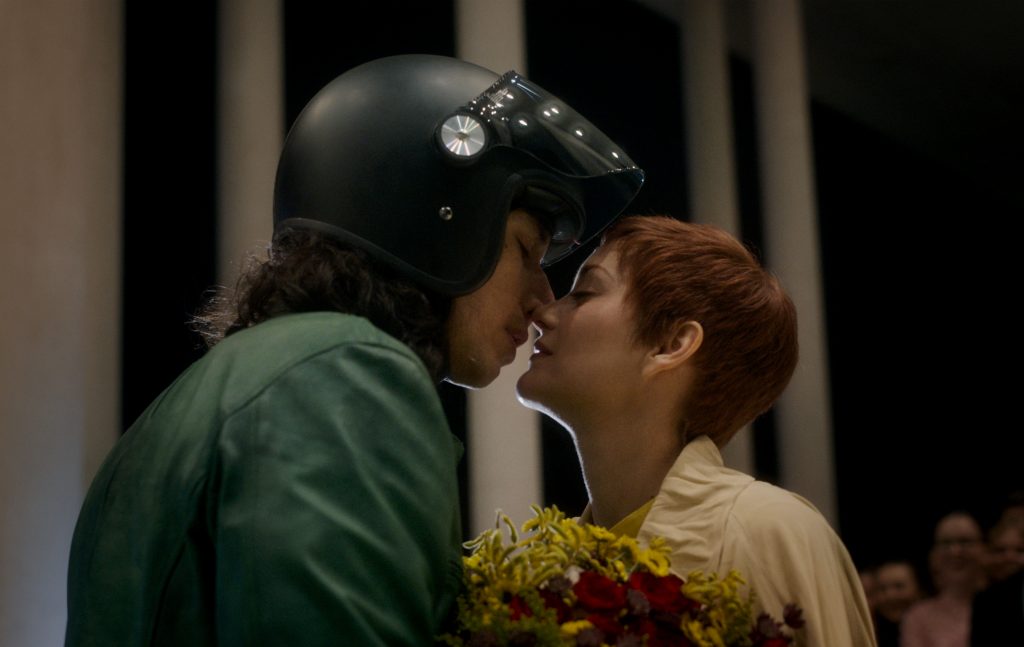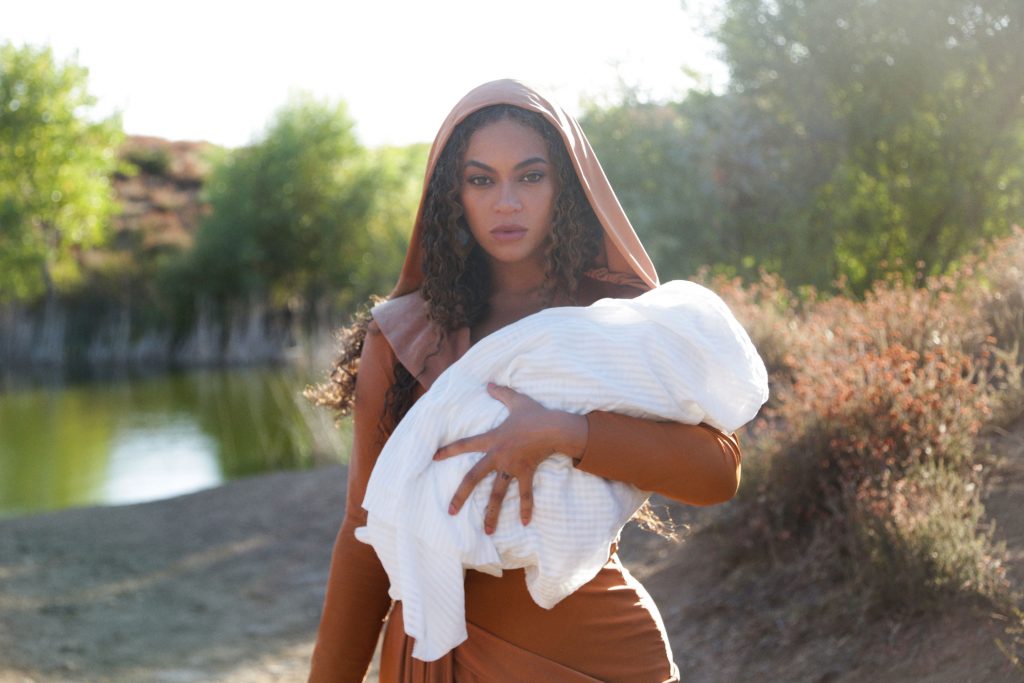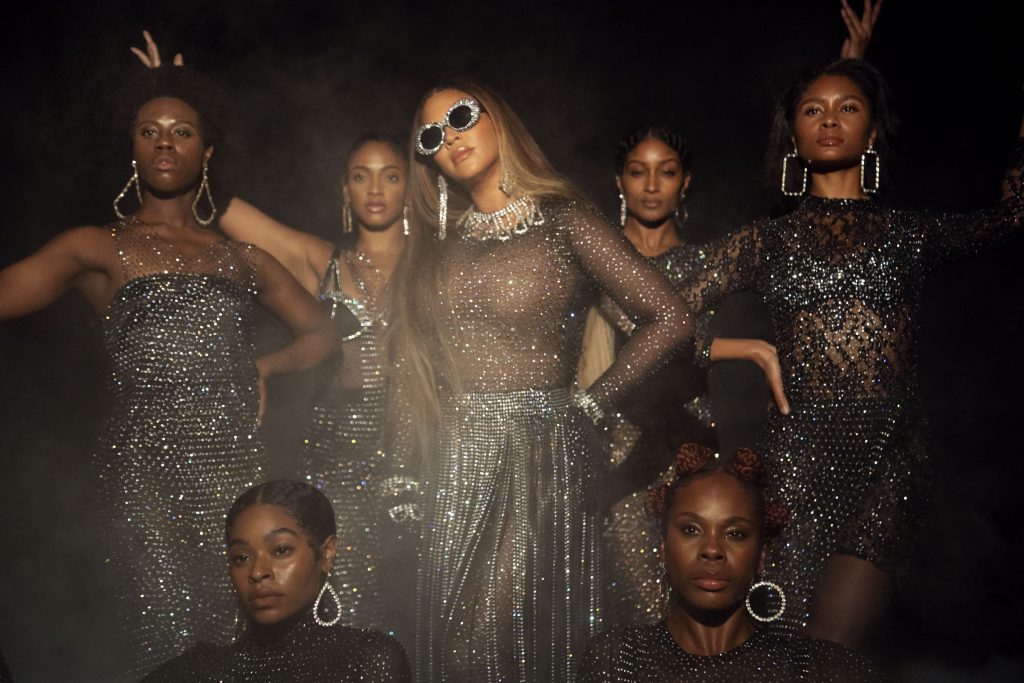February 23, 2022
by Carla Hay
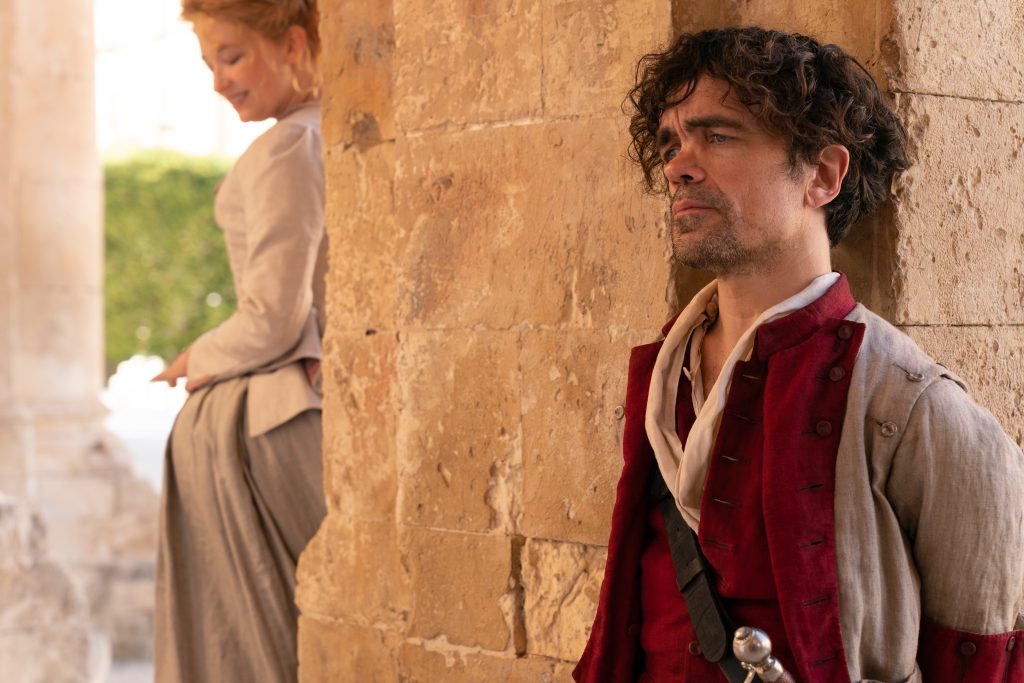
Directed by Joe Wright
Culture Representation: Taking place in France sometime in the 1600s, the musical “Cyrano” features a predominantly white cast of characters (with some black people) representing the working-class, middle-class and wealthy.
Culture Clash: A highly intelligent and articulate soldier named Cyrano de Bergerac is secretly in love with a maiden named Roxanne, who has a mutual infatuation with Christian, a soldier who befriends Cyrano and asks Cyrano to write love letters to Roxanne for him.
Culture Audience: “Cyrano” will appeal primarily to people who are inclined to like movie musicals and are fans of star Peter Dinklage.

Elegantly designed but with song lyrics and dialogue that can be corny, the musical “Cyrano” features above-average performances that elevate the movie’s tendency to sink into old-fashioned stodginess. Based on Edmond Rostand’s 1897 “Cyrano de Bergerac” play, the movie can be enjoyed by people of many different generations, but some viewers might think the tone is too earnestly sappy. Love it, like it or hate it, “Cyrano” director Joe Wright, screenwriter Erica Schmidt and this movie’s talented cast give this version of “Cyrano de Bergerac” their own unique and heartfelt stamp.
The story is essentially about an unorthodox love triangle between an intelligent but insecure man named Cyrano de Bergerac, who’s hopelessly in love with a woman who is his friend, but she loves someone who is considered more physically attractive by society’s standards. The more physically attractive man has intelligence shortcomings, so he asks the lovelorn man to write letters to the woman to impress her. How long the two men can keep this secret depends on how the story is adapted. Different versions of “Cyrano de Bergerac” also vary the time periods and occupations of the three people in the love triangle.
In the “Cyrano” musical, which takes place in France in the 1600s (and was actually filmed in Italy), Cyrano de Bergerac (played by Peter Dinklage) is an unlucky-in-love cadet who has been secretly in love with maiden Roxanne (played by Haley Bennett) for her entire adult life. Roxanne only sees Cyrano (who works for the King’s Guard) as a friend. She appreciates his wit and his creativity. He writes poems, and they both share a love of literature.
The movie’s timeline of Roxanne and Cyrano’s relationship is vague. Conversations in the movie suggest that Roxanne and Cyrano have known each other since their childhoods. Even though the “Cyrano” filmmakers try to pass off Cyrano and Roxanne as being fairly close in their ages, it’s impossible not to notice the 19-year age difference between Dinklage and Bennett.
In the beginning of the movie, Roxanne and her lady-in-waiting Marie (played by Monica Dolan) are getting Roxanne ready for a date with a wealthy duke, who is taking her to see a theater play. Roxanne is financially broke and behind on her rent. Marie advises Roxanne to marry the duke for his money. “Children need love. Adults need money,” Marie quips.
The problem is that Roxanne’s suitor Duke DeGuiche (played by Ben Mendelsohn) is an overbearing, pompous lout whom Roxanne can barely tolerate. Roxanne is a romantic who would prefer to marry for love. While Roxanne and DeGuiche drive by carriage to the theater, a wayward man on the streets named Christian Neuvillette (played by Kelvin Harrison Jr.) sees Roxanne. And it’s infatuation at first sight for Christian, but he’s told by someone on the street that Roxanne is “way above your station.”
This movie’s Cyrano is not the bashful sad sack that he’s depicted as in other “Cyrano de Bergerac” adaptations. Cyrano is still self-conscious about his physical appearance, which is an intrinsic part of his personality. However, this version of Cyrano has a feisty and combative side that he shows during this theater play. Cyrano is at this theater venue because he wants to be the star of the show.
On stage, Cyrano confronts an actor named Montfleury (played by Mark Benton) in an imperious voice: “What are you doing here? I sent you a letter last week urging you to retire.” Montfleury snaps back, “I received your letter, and I burned it!” Cyrano’s response is to chase Monfleury off of the stage. The audience is amused when Cyrano announces about Montfleury’s departure: “I have saved you from seeing a fiasco!”
But things soon get dangerous when a man in the audience named Valvert (played by Joshua James) calls Cyrano a “freak.” Valvert and Cyrano end up fighting with swords on stage. Their duel ends with Cyrano’s victory. Cyrano then makes this self-deprecating comment to the audience: “What you heard is not a rumor. I’m living proof that God has a sick sense of humor.”
However, Valvert is a very sore loser. He lunges at Cyrano, a tussle ensues, and Cyrano stabs Valvert, who dies. Needless to say, all the chaos and violence have abruptly ended this show, as people in the audience leave, with many of them feeling horrified or in shock.
One of the people who’s disgusted by what took place is De Guiche, who tells Roxanne on the way back home that Cyrano went too far. Roxanne tells De Guiche that Cyrano was only acting in self-defense. She says that Cyrano is her oldest friend, and she knows him as someone who would never intentionally murder someone. De Guiche is not impressed, and he advises Roxanne to end her friendship with Cyrano.
Cyrano has another close confidant. His name is Captain Le Bret (played by Bashir Salahuddin), who is also a member of the King’s Guard. Cyrano has confided in Le Bret about his love for Roxanne and has sworn Le Bret to secrecy about it. For all of Cyrano’s bravado in public, he’s still very insecure about expressing many of his private feelings, especially when it comes to love.
When Christian becomes a newly recruited soldier for the King’s Guard, Roxanne sees him for the first time. And she’s convinced that it’s love at first sight. Christian wants to act on his attraction to Roxanne, but he doesn’t think he’s smart enough for her. Christian and Cyrano become friends, and Christian notices how Cyrano is an excellent writer. And so, Christian asks his new friend Cyrano to pretend to be Christian in writing love letters to Roxanne. After some reluctance, Cyrano obliges.
People who know the original “Cyrano de Bergerac” story will know how the rest of the movie will go, because this musical adheres fairly close to the source material. The love letters work their charm, but Roxanne is confused over why Christian is so inarticulate in person, compared to his letters. Cyrano is torn about whether or not to tell Roxanne the truth, because Cyrano’s role in this deception could permanently ruin his relationship with Roxanne. Meanwhile, the love triangle saga plays out on battlefields, in bedrooms and in the neutral meeting place of Cyrano’s baker/poet friend Ragueneau (played by Peter Wight). Ultimately, difficult choices must be made.
Dinklage, who is immensely talented and has a wonderfully expressive face, makes some of the scenes almost heartbreaking to watch. Dinklage’s Cyrano isn’t a flimsy caricature but rather complex in how Cyrano deals with his inner turmoil but often puts up a brave front to the public. Bennett performs well as Roxanne, while Harrison is good but a little generic in his role as Christian. Harrison is the best singer of the three cast members portraying this love triangle.
The rest of the cast members in supporting roles are serviceable but stereotypical. Salahuddin plays a predictable loyal sidekick. Mendelsohn portrays yet another villain in a long list of movie villains that he’s depicted in his career. Still, there’s that touch of swagger that Mendelsohn brings to the role of De Guiche that makes this character somewhat amusing to watch.
“Cyrano” has 13 original songs, with music written by twin brothers Bryce Dessner and Aaron Dessner and lyrics by Matt Berninger and Carin Besser. The Dessner brothers also wrote the movie’s musical score. Berninger, Bryce Dessner and Aaron Dessner are all members of the rock band The National. The music of “Cyrano” carries the story along just fine, but it’s not an exceptional soundtrack. Where the movie falters the most is in how the lyrics for these original songs are sometimes cornball and trite, like something written for a school production.
In De Guiche’s big showcase song “What I Deserve,” he pouts as he bellows these lyrics: “Come, Roxanne, am I asking for too much? Why should I have to beg for what everybody wants? Take me right now. I don’t care if I have your love. I don’t have fear. Nothing’s even, nothing’s fair. Roxanne, I didn’t ask you to be here. I’ll pick the lock, I’ll draw the knife. I’ll climb the walls, I’ll crash the gate, because I deserve a happy life.” This is supposed to be the defining song for the movie’s chief villain? No thank you.
And although the movie’s dialogue is thankfully not too flowery, sometimes it veers too much in the opposite direction of being overly simplistic and dull. This is what Roxanne has to say when she begins to see that Christian isn’t as smart as she was expecting: “He might be an incredibly beautiful man with the mind of a rabbit. He can’t be. I need him not to be.” Maybe those lines might pass muster in a TV soap opera, but they just sound a little out of place in a movie with such lavish costumes and elaborate production design.
“Cyrano” keeps a fairly good pace throughout the story, but there are still a few moments that drag monotonously. Some viewers might be disappointed that there aren’t more scenes of Roxanne and Cyrano together. Because this version of Cyrano has a personality that’s less predictable and more volatile than other movie interpretations of the character, Dinklage really carries the film when it comes to keeping viewer interest. For all of the movie’s flaws, Dinklage’s riveting performance is a memorable and spirited interpretation of a character that is often portrayed as self-pitying and borderline pathetic in other versions of “Cyrano de Bergerac.”
Metro Goldwyn Mayer Pictures released “Cyrano” for a limited engagement in Los Angeles, beginning on December 17, 2021. The movie is set for a wide release in U.S. cinemas on February 25, 2022.

